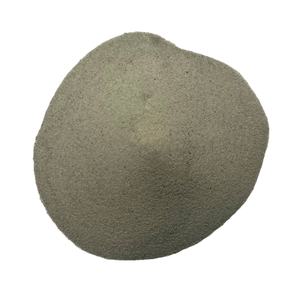Discover Premium Ceramic Products | Durability & Elegance United | Advanced Ceramics
1. Introduction
Just 24 hours ago, a major U.S.-based advanced ceramics manufacturer announced a breakthrough in high-purity silicon carbide crucible production, claiming a 30% improvement in thermal shock resistance for molten metal handling. This development reignites interest in how material science is reshaping industrial ceramics—especially when it comes to choosing between silicon carbide, silicon nitride, and other ultra-refractory compounds.

Silicon carbide crucibles have long been the go-to solution for high-temperature applications, but not all are created equal. In this deep dive, we’ll unpack the nuances of silicon carbide crucibles, compare them with key alternatives like silicon nitride and boron carbide, and explore their surprising crossover into consumer-grade items like silicon carbide ceramic dinner plates and baking dishes.
2. Understanding Silicon Carbide Crucibles
A silicon carbide crucible is a container made primarily from silicon carbide (SiC), engineered to withstand extreme temperatures—often exceeding 1,600°C—while resisting chemical corrosion and thermal shock. These crucibles are indispensable in foundries, laboratories, and semiconductor manufacturing.
What sets silicon carbide apart is its exceptional hardness (9.5 on the Mohs scale), high thermal conductivity, and low thermal expansion. This combination makes SiC ideal for repeated heating and cooling cycles without cracking—a common failure mode in traditional clay-graphite crucibles.
2.1. Manufacturing Methods Matter
Not all silicon carbide crucibles perform the same. The method of fabrication dramatically influences durability and purity:
- Reaction-bonded silicon carbide (RBSiC): Offers excellent mechanical strength and is cost-effective. RBSiC silicon carbide tile blocks and crucibles are widely used in industrial kilns.
- Sintered silicon carbide: Higher purity and better resistance to molten metals, but more expensive.
- Nitride-bonded silicon carbide: Enhanced oxidation resistance, often used in continuous casting and aluminum smelting.

Choosing the right type depends on your specific thermal profile, chemical environment, and budget constraints.
3. Silicon Carbide vs. Key Alternatives
While silicon carbide dominates many high-temp niches, it’s not always the best choice. Let’s compare it with two close competitors.
3.1. Boron Carbide vs. Silicon Carbide
Boron carbide (B4C) is harder than silicon carbide and offers superior neutron absorption—making it ideal for nuclear shielding. However, it’s significantly more brittle and far costlier. For crucible applications involving molten metals or glass, silicon carbide remains more practical due to its toughness and thermal conductivity.
3.2. Silicon Nitride: The High-Precision Alternative
Silicon nitride (Si3N4) crucibles—produced by specialized silicon nitride crucible factories—are gaining traction in semiconductor and aerospace industries. They offer better resistance to thermal fatigue and smoother surfaces that minimize contamination.

Custom silicon nitride heat shields, silicon nitride rings, and silicon nitride plates are increasingly specified where dimensional stability under cyclic heating is critical. That said, silicon nitride is generally less thermally conductive than SiC and comes at a premium price, especially when sourced from the high purity silicon nitride powder market.
4. Beyond Crucibles: The Expanding Universe of Silicon Carbide Ceramics
Interestingly, silicon carbide isn’t just for industrial crucibles anymore. Its aesthetic durability has sparked a niche in premium tableware:
- Silicon carbide ceramic baking dish and silicon carbide casserole ceramic dish lines now appear in gourmet kitchens.
- Brands like Staub have explored silicon carbide baking dish Staub variants for even heat distribution.
- You’ll also find silicon carbide ceramic dinner plates, black ceramic plates, children’s plates, salad bowls, ramekins, and even Christmas-themed platters—all leveraging SiC’s chip resistance and oven-to-table versatility.
Meanwhile, structural components like silicon carbide brick, silicon carbide ceramic columns, and silicon carbide burner nozzles continue to dominate heavy industry. Even plumbing has adopted the material: silicon carbide ceramic disc taps and silicon carbide ceramic disk for tap mechanisms offer unmatched wear resistance.
5. High-Temperature Tubing and Specialized Forms
Silicon carbide’s utility extends into tubular forms essential for harsh environments:
- Silicon carbide thermocouple protection tubes shield sensors in molten metal baths.
- Silicon carbide ceramic tubes for high temperature are standard in tube furnaces.
- Hybrid designs like silicon carbide zirconia tubes or silicon carbide mullite tubes balance cost and performance for specific atmospheres.
Porous variants, such as silicon carbide porous ceramic tubes, enable filtration in aggressive chemical processes—showcasing SiC’s adaptability beyond containment.
6. Practical Considerations When Selecting a Crucible
When choosing a silicon carbide crucible, consider:
- Operating temperature and atmosphere (oxidizing vs. reducing)
- Compatibility with the melt (e.g., aluminum vs. copper vs. glass)
- Required lifespan versus upfront cost
- Need for custom shapes (e.g., silicon carbide ring or handcrafted ceramic plates)
For labs handling reactive materials, sintered high-purity SiC is worth the investment. For foundries running batch melts, RBSiC offers the best value.
7. Conclusion
Silicon carbide crucibles remain unmatched for most high-temperature industrial tasks, but the landscape is evolving. With advances in silicon nitride ceramics and hybrid composites, engineers and chefs alike now have more options than ever. Whether you’re melting titanium or serving pie on a silicon carbide ceramic pie dish, understanding the material behind the product ensures better performance, safety, and longevity.
Our Website founded on October 17, 2012, is a high-tech enterprise committed to the research and development, production, processing, sales and technical services of ceramic relative materials such as Choose. Our products includes but not limited to Boron Carbide Ceramic Products, Boron Nitride Ceramic Products, Silicon Carbide Ceramic Products, Silicon Nitride Ceramic Products, Zirconium Dioxide Ceramic Products, etc. If you are interested, please feel free to contact us.
